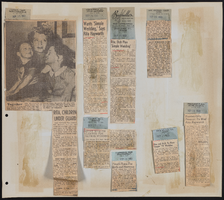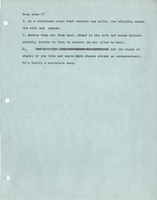Search the Special Collections and Archives Portal
Search Results
Kane Springs Ranch Records
Identifier
Abstract
The Kane Springs Ranch Records (1930-2005) contain materials related to the Kane Springs Ranch in Meadow Valley Wash outside of Moapa, Nevada. The collection primarily focuses on the property itself, but also contains a genealogy of the Huntsman family, the ranch's first owners. Records include deeds and materials from the sale of the Kane Springs Ranch to the Bureau of Land Management in 2005. The bulk of the collection documents how the Bradley Stuart family used its resources from 1952 to 2003. These materials are related to water usage on the property and a rock and sand mining operation.
Archival Collection
UNLV Libraries Collection of Aztar Corporation Financial Reports and Press Materials
Identifier
Abstract
The UNLV Libraries Collection of Aztar Corporation Financial Reports and Press Materials includes annual reports, financial reports, equity research reports, prospectus, press releases, market analysis, a company plan, and newspaper clippings for Aztar Corporation which was based in Phoenix, Arizona, dating from 1991 to 2006.
Archival Collection








